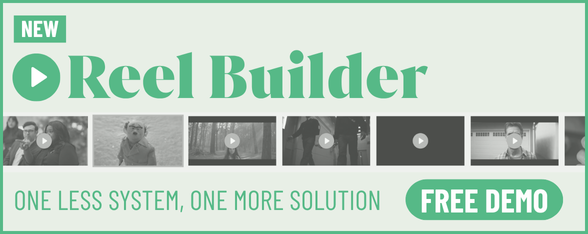
“It’s a Long-Term Win Disguised as an App Launch”: How The Brandon Agency Helped Modernise the Farmers Telephone Cooperative

Nick McNeill is the interactive director at Brandon, a full-service marketing agency. With over two decades of experience, Nick leads cross-functional teams across UX strategy, development, and analytics to deliver digital transformation at scale.
He specialises in solving complex business challenges through user-centered thinking – crafting data-driven digital experiences that are as intuitive as they are impactful.
Nick sat down with LBB to dissect his recent work with the Farmers Telephone Cooperative and how a simple brief focusing on online customer experiences evolved into a technological innovation…
WHAT YOU MADE
We created a modern web-based customer portal and native iOS/Android mobile apps for a rural telecommunications group, Farmers Telephone Cooperative (FTC). The platform provides users with real-time access to billing, account management, service usage, and support tools for a wide range of residential and business services – from fiber internet and digital TV to phone, wireless, and home security.
The solution is technically innovative not just because of the end product, but because of the environment in which it had to be built: a mix of legacy systems with no existing APIs and extremely limited access to modern architecture.
We built the foundation for digital transformation and modern customer experience, tailored to a small, regional business but modeled after national competitors like Xfinity and AT&T.
THE PROBLEM
The initial brief was simple: We want our customers to have a better experience online.
But once we got under the hood, we quickly realised the real challenge was a lack of infrastructure. Their internal systems were legacy-based, siloed, and offered no API access.
The company wanted to offer digital experiences comparable to large telecom brands – but without the tools to do so.
We realised this wasn’t just about design or development – it was a full transformation project. We needed to partner with their IT team to help define, build, and modernise the core data flow before we could even begin designing front-end experiences.
IDEATION
Our first steps involved mapping the customer lifecycle and outlining all of the possible touchpoints a user would have with their services – from viewing bills to changing service plans or setting up new lines. From there, we compared those expectations to the internal capabilities of the client’s systems.
Ideation was part creative vision, part forensic IT work. We sketched out various interface possibilities while simultaneously working with their IT team to define what was even possible. The goal was to bridge the gap between legacy infrastructure and a modern UX.
We drew a lot of inspiration from telecom giants – not just for visual and UX patterns, but for feature parity. Our benchmark wasn’t “better than what they have now,” it was “good enough to compete with Comcast.”
PROTOTYPE & DESIGN
Designing in parallel with infrastructure development was a challenge – we often had to design for data that didn’t exist yet. That meant frequent prototyping and wireframing alongside their internal teams to figure out how to surface things like billing logic, service hierarchies, and user permissions.
The most interesting conversations were often around business logic – for example, what happens when a user is on a payment plan, but also has an overdue fee and an upcoming activation date? These aren’t typical UX problems – they’re deeper operational ones. We had to think through edge cases with their customer service and technical teams, every week for months.
We collaborated closely with developers, security analysts, and service reps to make sure we were capturing real-world scenarios – not just ideal-state workflows.
LIVE
Testing and iteration were a constant – we conducted weekly working sessions with the client’s team to vet scenarios, validate designs, and course-correct. Because this wasn’t a clean-slate environment, testing often uncovered unforeseen edge cases tied to the legacy data structure.
One of the toughest challenges was building secure, performant APIs into systems that were never designed to be internet-facing. We had to take a cautious and methodical approach to data handling and authentication, particularly because these systems contained sensitive billing and customer data.
Now that the platform is live, we’re tracking usage patterns, login behaviour, and support ticket reduction. Anecdotally, customer service reps report fewer calls related to basic account management – a big win for both operational efficiency and user satisfaction.
Personally, the most rewarding part of this project was the true collaboration it required – this wasn’t just “build a new app,” it was “help our company modernise.” We weren’t vendors; we were partners. And we helped shape something that, while invisible to most users, fundamentally changed how the company operates.
For the client, the impact is significant: they now have an elevated customer experience that competes with national players, a foundation for future digital tools, and a more efficient customer service model. It’s a long-term win disguised as an app launch – and that’s what made it such a fulfilling problem to solve.















